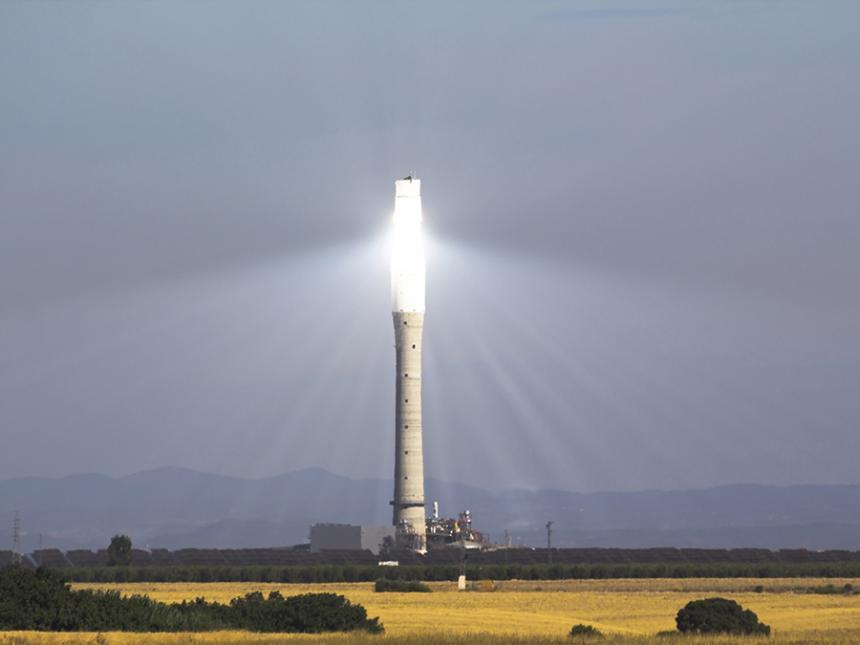Low Temperature Process Heat

Dr Keith Lovegrove,
Managing Director, IT Power
Our team is evaluating realistic costs for an actual industrial process, accounting for process requirements and solar resource variability.Dr Keith Lovegrove, Program 1 Leader
At alumina plants, about half of the thermal energy used in the Bayer process is low temperature heat up to about 280ºC. (The other half goes into the high temperature calcination process.)
The project builds on a 2015 IT Power study, prepared for and funded by ARENA, which found that solar thermal is likely to be economically viable for industrial gas users at temperatures up to 150ºC and possibly even to 250ºC.
-
What we're doing

In Program 1, the team is investigating if and under what conditions concentrating solar thermal (CST) technology can be integrated into full-scale low temperature process heat for digestion, evaporation and pre-heating as part of the Bayer process.
The CST technologies being investigated are:
- non-tracking compound parabolic concentrators
- parabolic trough concentrators
- linear Fresnel concentrators
- power tower concentrators.
All of these technologies are already commercially available and can produce heat between 150ºC and 280ºC with varying efficiency and cost. The tracking systems (parabolic trough, linear Fresnel and power towers) can reach high enough temperatures to generate combined heat and power. The system would heat steam to around 500ºC that is then partially expanded through a turbine, which generates electricity and still provides the temperature needed in the alumina plant.
Our findings will be tested in a feasibility study at Alcoa’s Kwinana Alumina Refinery Plant in Western Australia. After this, we will produce a conceptual design.
This program also offers a pathway to implementing CST in other, more complex and higher temperature process heat applications. The progressive implementation of commercially available technology brings down the cost of the manufacture of solar field components in Australia and also brings working knowledge and experience to the process industry.
-
Aim
- To develop process models of the Bayer process, identifying all mass and energy flows, together with streams with potential for stockpiling and the compatibility of each stream with each of the various CST technology options
- To develop models of the performance of each of the CST technologies suitable for providing low temperature heat (<280ºC), accounting for solar variability, heat losses and any thermal storage options
- To identify configurations that offer strong potential for economic viability through preliminary assessments
- To undertake a detailed evaluation potential of preferred configurations for a range of typical conditions of wide relevance to the alumina sector, using real costs, process models and systems
- To undertake a full feasibility study of a selected plant for the highest value opportunities
- To develop a plan to implement the preferred configurations through a demonstration installation and fully evaluate its performance.
The intended outputs are:
- Process and techno-economic models to reliably calculate the economic viability of commercially available low temperature (<280ºC) solar concentrators for their novel application to digestion, drying and pre-heating in the Bayer process
- A plan for full-scale demonstration, including optimal configurations of low temperature CST for the digestion, evaporation and pre-heating parts of the Bayer process.
-
Why this program is needed
Industries that use process heat are risk averse – and for good reason. Industrial processes are capital intensive and operate in a highly competitive environment. Also, while the technologies we are investigating are already commercially available, they have not yet been applied to the Bayer process. Their viability in alumina processing has not yet been evaluated.
The team will be working to identify a viable pathway for alumina plants to introduce CST into the Bayer process, both to save on energy costs and to provide a path for greenhouse gas mitigation, with minimal risk.
The program is needed to:
- identify constraints in terms of land area relative to other process plants
- assess the risk of performance degradation due to the close proximity to sources of dust, and opportunities to minimise interference with the plant
- make use of parts of the system that offer potential for synergy with other technologies
- evaluate methods to meet the different flow rates and temperatures of different low temperature process heating requirements with CST
- assess control strategies with which to manage switching between solar and conventional modes of operation.
-
Progress
Process models of energy flows in low temperature stages of the Bayer process
The team has already developed:
- a working process model to analyse the energy and mass flows in low temperature stages of the Bayer process
- an energy flow and an energy distribution of the low temperature stages of the Bayer process.
Process models of low temperature CST technologies integrated into the Bayer process
The team has already evaluated a CST technology to produce direct steam for a steam turbine and the digestion of the Bayer process using the System Analysis Model (SAM) tool developed by NREL.
We’ve also investigated the DNI variation in Perth over a year and found a variation of 71% from the days with highest DNI to those with the lowest non-zero maximums. For a plant sized to provide 98% of the heat with solar energy during the solar day in summer, only 30% of the maximum can be obtained in winter. This results in a large energy input difference that has to be compensated either with a larger solar multiple (i.e. oversizing the solar array in summer) and thermal storage or (if we are to utilise existing components) with natural gas-fired backup boilers to maintain the required steam input.
First stage techno-economic assessment of low temperature CST technologies into the Bayer process
Options for energy storage are interlinked with the options for heat transfer fluid for use in the solar field. The practical choices for heat transfer fluid are heat transfer oil, pressurised water, saturated steam or molten salt.
Thermal storage can then be achieved via either of:
- storage of large volumes of heated heat transfer fluid
- storage of heat in volumes filled with a matrix of rock or ceramic material in direct contact with the heat transfer fluid
- transfer of heat via heat transfer tubes to large volumes of solid heat storage material (e.g. concrete).
Finally, an initial list of potential technology suppliers has been established.
